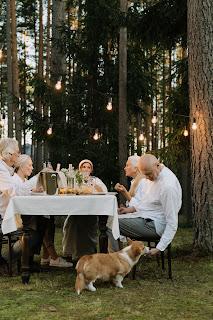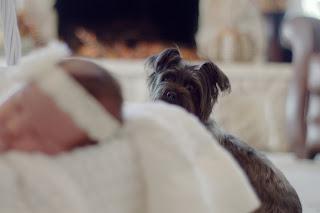How exciting is it to be in a position to have a dog with you in the family? Being able to introduce the kids to a new puppy is a wonderful way to have fun and to bond together. It’s exciting to be able to tell the children that they can help you to choose a name for your new dog and even if your pet seems laid back and calm, you still have to prepare your children for the new family member. Dogs come with a range of personalities and histories and unless you are buying a puppy and you understand where the parents of the puppy came from, you’re going to need to research those histories more in depth.
You want to make sure that everyone in your family gets on with the new dog and that means planning is necessary. From learning dog sleep habits to understanding the best food to buy for your dog, you have a lot to learn. So, with this in mind, we’ve got a few essentials for you to learn. Cementing a strong bond between your new dog and your children and even current dogs takes some time. Walking together, playing games, teaching tricks - it’s all part of the process. You can visit new places together and you can make sure that your new pooch feels welcomed into the house.

- 1. Get to know the dog breeds that will fit your family. Some families love a labrador - a loyal, happy dog who will need a lot of walking and fun. Other families prefer tiny dogs that don't take up too much space. You can match your new pets personality to the household, too, and their personality will determine your time to train and teach them what they need to learn.
- 2. Set up an introduction. Before you bring a new dog - or a puppy - home to the kids, you need to introduce everyone away from the house. You need to have a trial run where they can meet the dog for the first time and you should know pretty quickly if this is the dog for you. You should consider how your children will interact with a new dog and whether they will be happy or afraid of a new dog in the house. You should think about whether everyone in your family is happy or not - and if not, don't go ahead.
- 3. Create a safe place in advance. Pets should have somewhere safe that they can retreat if they are overwhelmed. A cage with their bedding and favorite toys can help but if they are new to your family they will need somewhere to feel calm. It’s also a good idea to get the dog away from the kids if they are being patted too much. It has to be a comfortable transition period for everyone - including the dog.
- 4. Introducing a new dog to an older dog. Dogs are super social creatures so you might find that your new puppy will get on well with your current pup. If you adopt an older dog, however, you might find that you need extra help to make this meeting as smooth as possible. Start with introducing a scent so that you can get your current dog used to the scent of the new dog and vice versa. You need to make sure that this move goes smoothly so introduce the new dogs on a neutral ground so that they can be peaceful and familiar in a calm way.
- 5. Be positive and patient. Introducing your dog to another dog and to the rest of the family takes some time. There will be a transition period for everyone and sometimes it takes time for the dogs to develop enough trust for all. Older kids will often settle really well, but younger children need some time to feel okay with the presence of an animal in their homes. It’s always a good idea to meet everyone together but start with a comfortable distance. That goes for when you introduce a pet with a pet! You need to understand that if - after a few weeks - the settling in hasnt gone very well, this may not be their match for you all? You could choose to foster first if you want to, and this will tell you whether the kids will be happier with a dog around. These are big decisions - you’re not just getting a pet; you’re getting a member of the family to live with you and this is going to make a big difference to everyone.

- 6. Talk it over. What do you do if one of you in the family doesn't want a dog? This isn't the kind of issue that can hold a vote. A dog changes everything. Your house, your relationships, the way you interact with other animals - it all changes with dogs around. You need everyone to be on board and okay with this decision, because introducing a pet shouldn't be something you do without making sure everyone is on board with the choice.
- 7. Homecoming. Once everyone is happy, you need to get your house ready. If there are areas of the house you don't want to be mixed up with a dog, then you need to make sure that these are out of bounds with puppy gates. You’ll need bowls, treats, food, mats to catch the spills, puppy training pads, a route for walking the dog - there’s a lot to do! You should also consider making sure that you get a dog sitter/boarding house on your phone and ready. If you’re at work, you might want to have someone walk the dog during the day, and so you need to do your research as early as possible. Bringing a dog home to a house that isn't ready isn't the smartest thing to do!
- 8. Consider other pets. You might not have a dog at home but do you have cats? Fish? Rabbits? It’s important that you get your dog prepared for other pets so bringing something that smells like them to the dog so he can be familiar with the smell is important! Don't force the interaction - let the relationship grow naturally and you’ll see the joy in all of the people and animals in your house.
- 9. Prepare your routine. You are going to have to walk your dog and you have a lot to learn about training, too. Get to know puppy training schools and trainers in the area and be ready to get your dog trained into your routine. Let your dog be close to you and prepare your routine so that you’ll be able to go places and do things without your house being destroyed. Consider having some time off to help settle your new dog into their home. This is going to be so important for your bond with them as much as the bond everyone else has. If you have a new baby on the way and you want a puppy, remember that this may be a lot of hard work at first. Allowing a dog to be alone with the kids is never a good idea; aim for supervision at first!
- 10. Get to know their needs. Some areas of the world become too hot or even too cold for dogs to go on walks. You need to get to know these areas so that you can equip yourself adequately and ensure that you are giving your dog what they need. To know whether you should walk your dog in the evening or allow your dog to walk in the sunshine, you need to get to know your dog's needs.
- 11. Don't be afraid to cuddle the dog! You don't want the kids to pull their tail, but you should want to cuddle the dog and be as sure as possible that you build that bond with them. The more you spend time with your dog, the better they will bond with you which makes giving commands so much easier, too. Introducing your dog to other people should be something you take your time with. You should enjoy snuggling up with your pup but only if you pick the right breed.
- 12. Lay down some house rules. Dogs have no manners at first, which means that there will be some adjustments as everyone gets to know their new roles. There will be food to buy and get to know, poop to clean up and bath time to have! You have to be ready and so does the rest of the family. Make sure that you know the breeder for your dogs and any quirks or issues that could come with them.
The best thing that you can do when you get a new dog is take your time. Make sure that everyone is on board with the new changes, their new responsibilities and the new role your dog will take in your family.
If you enjoy my blog, please consider following me on Bloglovin'
